Related Research Articles

David Wark Griffith was an American film director. Considered one of the most influential figures in the history of the motion picture, he pioneered many aspects of film editing and expanded the art of the narrative film.
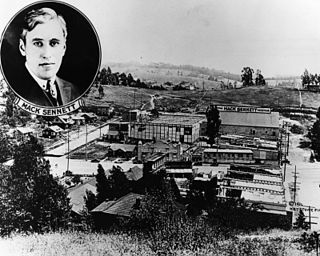
Keystone Studios was an early film studio founded in Edendale, California on July 4, 1912 as the Keystone Pictures Studio by Mack Sennett with backing from actor-writer Adam Kessel (1866–1946) and Charles O. Baumann (1874–1931), owners of the New York Motion Picture Company. The company, referred to at its office as The Keystone Film Company, filmed in and around Glendale and Silver Lake, Los Angeles for several years, and its films were distributed by the Mutual Film Corporation between 1912 and 1915. The Keystone film brand declined rapidly after Sennett went independent in 1917.

Gower Street is a street in Los Angeles, California that has played an important role in the ongoing evolution of Hollywood, particularly as the home to several prominent Poverty Row studios during the area's Golden Age. It marks the eastern terminus of the Hollywood Walk of Fame.

The Sony Pictures Studios is an American television and film studio complex located in Culver City, California at 10202 West Washington Boulevard and bounded by Culver Boulevard (south), Washington Boulevard (north), Overland Avenue (west) and Madison Avenue (east). Founded in 1912, the facility is currently owned by Sony Pictures and houses the division's film studios, such as Columbia Pictures, TriStar Pictures, and Screen Gems. The complex was the original studios of Metro-Goldwyn-Mayer from 1924 to 1986 and Lorimar-Telepictures from 1986 to 1989.
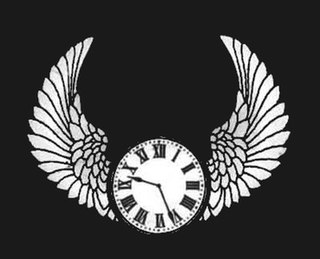
Mutual Film Corporation was an early American film conglomerate that produced some of Charlie Chaplin's greatest comedies. Founded in 1912, it was absorbed by Film Booking Offices of America, which evolved into RKO Pictures.

Henry Brazeale Walthall was an American stage and film actor. He appeared as the Little Colonel in D. W. Griffith's The Birth of a Nation (1915).

Triangle Film Corporation was a major American motion-picture studio, founded in July 1915 in Culver City, California and terminated 7 years later in 1922.

Francelia Billington was an early American silent-screen actress, and an accomplished camera operator.

Sunset Gower Studios is a 14-acre (57,000 m2) television and movie studio at the corner of Sunset Boulevard and Gower Street in Hollywood, California. Established in 1912, it continues today as Hollywood's largest independent studio and an active facility for television and film production on its twelve soundstages.
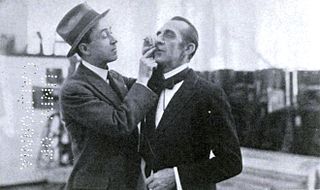
John Emerson was an American stage actor, playwright, producer, and director of silent films. Emerson was married to Anita Loos from June 15, 1919 until his death, and prior to that the couple had worked together as a writing team for motion pictures. They would continue to be credited jointly, even as Loos pursued independent projects.

Tiffany Pictures, which also became Tiffany-Stahl Productions for a time, was a Hollywood motion picture studio in operation from 1921 until 1932. It is considered a Poverty Row studio, whose films had lower budgets, lesser-known stars, and overall lower production values than major studios.

The Battle of the Sexes is a 1914 American silent drama film directed by D. W. Griffith for the Majestic Motion Picture Company. No complete print of the film is known to exist; however, a fragment has survived. Griffith remade the film as The Battle of the Sexes in 1928 as a comedy-drama and this latter version is available on DVD.
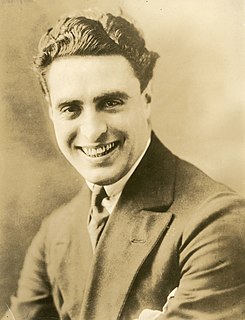
George Frederick Walsh was an American actor. An all-around athlete, who became an actor and later returned to sport, he enjoyed 40 years of fame and was a performer with dual appeal, with women loving his sexy charm and men appreciating his manly bravura.
The Centaur Film Company was an American motion picture production company founded in 1907 in Bayonne, New Jersey, by William and David Horsley. It was the first independent motion picture production company in the United States. In 1909 the company added a West Coast production unit, the Nestor Film Company, which established the first permanent film studio in Hollywood, California, in 1911. The company was absorbed by the Universal Film Manufacturing Company in 1912.
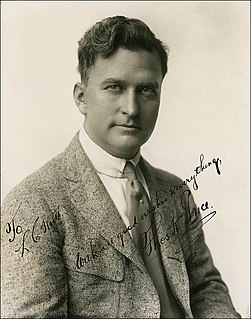
Thomas Harper Ince was an American silent film - era filmmaker and media proprietor. Ince was known as the "Father of the Western" and was responsible for making over 800 films. He revolutionized the motion picture industry by creating the first major Hollywood studio facility and invented movie production by introducing the "assembly line" system of filmmaking. He was the first mogul to build his own film studio dubbed "Inceville" in Palisades Highlands. Ince was also instrumental in developing the role of the producer in motion pictures. Three of his films, The Italian (1915), for which he wrote the screenplay, Hell's Hinges (1916) and Civilization (1916), which he directed, were selected for preservation by the National Film Registry. He later entered into a partnership with D. W. Griffith and Mack Sennett to form the Triangle Motion Picture Company, whose studios are the present-day site of Sony Pictures. He then built a new studio about a mile from Triangle, which is now the site of Culver Studios. Ince's untimely death at the height of his career, after he became severely ill aboard the private yacht of media tycoon William Randolph Hearst, has caused much speculation, although the official cause of his death was heart failure.
The New York Motion Picture Company was a film production and distribution company from 1909 until 1914. It changed names to New York Picture Corporation in 1912. It released films through several different brand names, including 101 Bison, Kay-Bee, Broncho, Domino, Reliance, and Keystone Studios.
Fine Arts Film Company produced dozens of movies during the silent film era in the United States. It was one of the film production studios in Triangle Film Corporation, each run by one of the parent company's vice-presidents: D. W. Griffith, Thomas H. Ince, and Mack Sennett. Fine Arts was Griffith's studio and was located on Sunset Boulevard. It was often billed as Triangle Fine Arts.

Harry E. Aitken was a film studio executive.
The Dawson Film Find (DFF) was the accidental discovery in 1978 of 372 film titles preserved in 533 reels of silent-era nitrate films in the Klondike Gold Rush town of Dawson City. The reels had been buried under an abandoned hockey rink in 1929 and included lost films of feature movies and newsreels. A construction excavation inadvertently uncovered the forgotten cache of discarded films, which were unintentionally preserved by the permafrost.

Majestic Film Company, also known as Majestic Motion Pictures, was a film studio established in 1911. It became an affiliate of the Mutual Film Corporation and was combined with Reliance Film Company to form Reliance-Majestic Studios.
References
- ↑ Aberdeen, J. A. "D. W. Griffith—Independent Profile". Cobblestone Entertainment. Retrieved 20 June 2019.
- ↑ The Birth of a nation: D.W. Griffith, director. 1994-07-01.
- ↑ Schneider, Jerry L. Edgar Rice Burroughs and the Silver Screen. The Locations. Vol. IV. Lulu.com. p. 270. ISBN 978-1-4116-3049-9.
Coordinates: 34°5′53.41″N118°17′16.17″W / 34.0981694°N 118.2878250°W